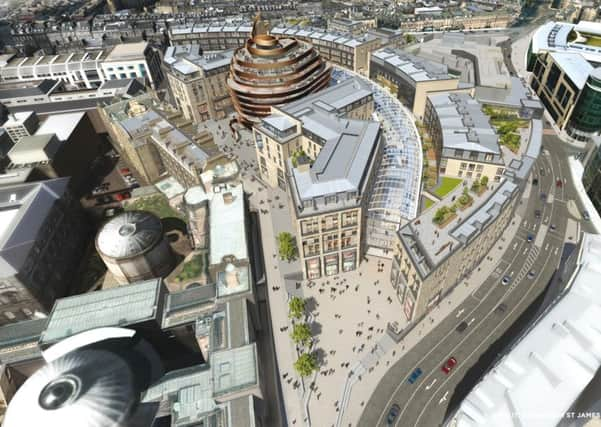Commercial property: New approach to high street decline


The firm reported how an average of 16 high street stores closed across Britain every day last year.
Banks, travel agents and estate agents were among the worst affected as consumers increasingly transact online for these services.
Advertisement
Hide AdAdvertisement
Hide AdWhile we have always seen a regular churn of less relevant retailers and businesses making way for newcomers, we are experiencing the high street equivalent of a declining birth rate.
There are simply not enough new businesses coming through to replace those which are falling by the wayside.
As PWC reported, the average of 11 stores which opened on British high streets every day last year is not keeping pace with the level of closures.
Scotland is the most affected area in the UK with 290 high street stores shutting up shop in 2017 with only 142 opening, a net loss of 148 premises.
These gloomy statistics underline the challenge to both public authorities and private commercial property owners to find new ways of drawing people into the high street and revitalising an increasing level of vacant spaces.
One way to address the problem is through a greater focus on place-making.
Often seen as a means of boosting social wellbeing, place-making tends to involve collaboration between public authorities and private sector developments, all aimed at enhancing commercial property values and boosting the appeal of an area.
This approach has real potential to breathe life back into high streets and key city centre areas affected by the ongoing demise of traditional businesses.
Advertisement
Hide AdAdvertisement
Hide AdThe east end of Edinburgh’s city centre provides examples of place-making in action.
Following the demolition of the outdated site, the aim behind the £1 billion retail-led transformation of Edinburgh St James is to create a world class destination, incorporating four floors of shops, dining, leisure and entertainment facilities, a cinema, homes and a five-star hotel.
The development’s architectural design is intended to blend in physically with adjacent buildings while integrating culturally and socially with the pulse of Edinburgh.
Meanwhile Edinburgh’s St Andrew Square is being reinvented as one of Scotland’s leading restaurant and leisure destinations.
Among the breed of high-end restaurants and leisure resorts behind the square’s transformation are Hawksmoor, a major steakhouse brand opening in the banking hall of the former RBS headquarters next month, and Gleneagles, which is launching a club in the former Bank of Scotland flagship branch.
On a smaller scale, specialist retailers, restaurants and leisure operators can also contribute to place-making.
As highlighted in the PWC report, beauty product stores, speciality coffee shops, ice cream parlours and booksellers are among those bucking the trend and enjoying a net increase in stores.
An example of this level of place-making was seen in Aberdeen with Cognito, an independent food specialist, which opened another café-bistro and gin bar in a disused Bank of Scotland branch last year.
Advertisement
Hide AdAdvertisement
Hide AdA strong focus on place-making is much more likely to bring value in the widest sense – creating jobs, improving landscapes and transforming the image of existing locations.
Successful place-making requires close collaboration between developers, funders, local councils and occupiers but, done correctly, it can revitalise Scotland’s high streets and city centres.
Eilidh Mactier is an associate at law firm CMS